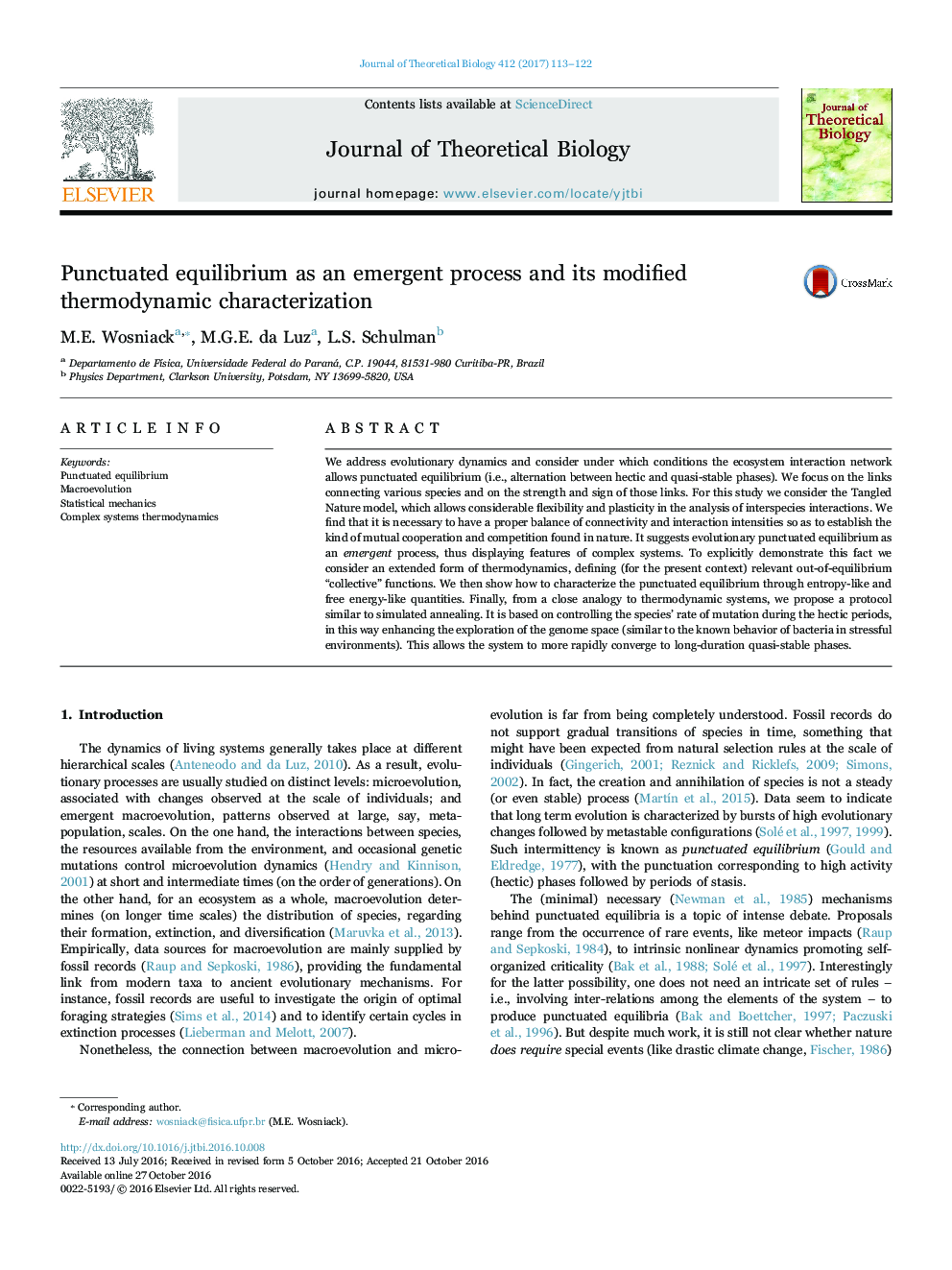| Article ID | Journal | Published Year | Pages | File Type |
|---|---|---|---|---|
| 6368810 | Journal of Theoretical Biology | 2017 | 10 Pages |
Abstract
We address evolutionary dynamics and consider under which conditions the ecosystem interaction network allows punctuated equilibrium (i.e., alternation between hectic and quasi-stable phases). We focus on the links connecting various species and on the strength and sign of those links. For this study we consider the Tangled Nature model, which allows considerable flexibility and plasticity in the analysis of interspecies interactions. We find that it is necessary to have a proper balance of connectivity and interaction intensities so as to establish the kind of mutual cooperation and competition found in nature. It suggests evolutionary punctuated equilibrium as an emergent process, thus displaying features of complex systems. To explicitly demonstrate this fact we consider an extended form of thermodynamics, defining (for the present context) relevant out-of-equilibrium “collective” functions. We then show how to characterize the punctuated equilibrium through entropy-like and free energy-like quantities. Finally, from a close analogy to thermodynamic systems, we propose a protocol similar to simulated annealing. It is based on controlling the species' rate of mutation during the hectic periods, in this way enhancing the exploration of the genome space (similar to the known behavior of bacteria in stressful environments). This allows the system to more rapidly converge to long-duration quasi-stable phases.
Related Topics
Life Sciences
Agricultural and Biological Sciences
Agricultural and Biological Sciences (General)
Authors
M.E. Wosniack, M.G.E. da Luz, L.S. Schulman,
